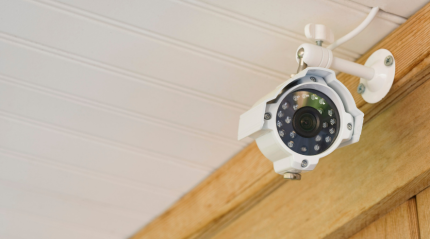How to Choose the Best Wi-Fi Router for Home?
- 14 September 2022

Wireless internet connectivity has become a necessity in today's world, and home Wi-Fi is no exception. Whether you're streaming movies or downloading software updates, it's essential to have a strong and stable Wi-Fi connection to keep up with the times. You want to be sure that no matter what device you have connected to the internet, that it will always be able to connect quickly and easily without any hiccups, right? Additionally, you might want to secure your home network so that intruders can't access your personal information. Luckily, there are several reputable and trustworthy brands out there that produce quality wireless routers which serve as an excellent solution for all your needs, as long as you know which one to purchase! In this article, we will discuss everything you need to know about selecting the best home Wi-Fi router for your needs so you can get the most out of your internet connection and stay secure throughout the day.
Features To Look For
No matter what use case you have in mind for a home Wi-Fi router, there's a model out there that will suit you perfectly. From fast speeds and reliable connections to advanced security options and the ability to run multiple internet connections, these brands know how to build a solid device that will serve your needs for years to come. When shopping for home Wi-Fi, keep in mind that the device needs to be compatible with the devices and software which are already in your home. Additionally, it's important that the router is designed to work with a range of devices which are typically found in homes (e.g. laptops, tablets, and smartphones), as well as IoT devices (e.g. security cameras, temperature sensors, etc.).
Wireless N Vs. Wireless AC
If you're new to the world of wireless routers, you might not know what exactly to look for. Do you want something cheap which you can pick up at a local store? Or, do you want a high-end device which will offer the best possible speeds? If so, you need to make a choice between wireless N and wireless AC. While both are common in current home routers, wireless N is much more commonly found in entry-level routers, and wireless AC is more commonly found in mid- to high-end devices. If you have a choice between the two, go for wireless N. It's faster, more stable, and less prone to errors. Additionally, the 5GHz band is more commonly used for wireless N, while the 2.4GHz band is used for wireless AC. When shopping for a home Wi-Fi device, make sure to research the specifications before buying. This way, you'll know exactly what you're getting into. If you decide that you want a wireless AC router, you might have to choose between 5GHz and 2.4GHz bands, as well as search for Wi-Fi extenders specifically designed for wireless AC connections.
Wired Vs. Wireless Connections
Another thing to consider when shopping for home Wi-Fi is the type of connection you have available. If you have a wired connection available (i.e. Ethernet or optical fiber cables), it's always a good idea to go with that instead of wireless. It's generally faster and more stable when compared to a wireless connection. Additionally, you can monitor and control the connection from a single location using your cable provider's equipment. If you decide to go wireless, there are several viable options including traditional Wi-Fi (e.g. 802.11b/g/n), as well as newer and more efficient protocols such as ZigBee, WiFi-Triangle, and Bluetooth Low Energy (also known as BLE).
Power Management
No matter what use case you have in mind for a home router, it needs to be portable. This is typically because homes are filled with electronic equipment (e.g. tablets, laptops, and smartphones) which consume large amounts of power. Because of this, it's important that the router you choose is equipped with power management features. This way, you won't overload your home's electrical system with unnecessary power surges which could potentially damage your equipment. Some routers out there even come with advanced power management features which will monitor and adjust the power consumption of connected devices based on time of day and usage levels. For maximum portability, you should select a device with a low power consumption. This will help you avoid overloading your home's electricity grid and causing unnecessary stress on the electrical system.

Speed
The final thing to consider when shopping for a home router is the speed. This will depend on your needs, how far you want to push your internet connection, and what type of devices you have connected to the network. You want to ensure that the speed is fast enough to handle your demands. This will also depend on the type of service you have contracted with your internet service provider. For example, if you're using a cable connection, it might be a good idea to look for a cable modem with a DOCSIS 3.0 chipset. This will help ensure that your internet connection is as fast as it can be while using the least amount of bandwidth possible. Additionally, if your internet connection is facing congestion, this could potentially cause speed drops and even disconnections. To prevent this from happening, it's important to select a cable modem with an optimized IP address as this will help ensure that your internet connection is stable and fast.
With all of this in mind, let's take a look at some of the best home routers currently available on the market.
Wireless N Router
If you decide to purchase a wireless N router, make sure to look for one which is dual band (i.e. 2.4GHz and 5GHz). Most wireless N routers are also compatible with both the 2.4GHz and 5GHz WiFi bands, but they can only operate at medium to high speeds (i.e. 12Mbps to 54Mbps) in the 2.4GHz band. This is because most households only have 2.4GHz capable WiFi devices, and these devices were never designed to operate at the higher speeds of a 5GHz band. If you plan on using a lot of bandwidth (e.g. streaming HD video), look for a model which is triple band (i.e. 2.4GHz, 5GHz, and 8GHz), or even quadruple band (i.e. 2.4GHz, 5GHz, 8GHz, and 12GHz). Additionally, make sure to check out the wireless N router's power management options, as most of these devices are equipped with advanced power management features which will keep your electricity bills low, and your devices safe and stable.
Wireless AC Router
If you decide to purchase a wireless AC router, look for a model which supports the 5 GHz WiFi band. Most wireless AC routers are also compatible with the 2.4GHz band, but they can only operate at a lower speed (i.e. 3Mbps). Due to this, the 2.4GHz WiFi band is commonly referred to as “accelerated” or “extreme” WiFi, and it is typically only found in high-end devices. If you have a choice between the 2.4GHz and 5GHz WiFi bands, go with the former, as it will give you better speeds and range. Additionally, make sure to check out the power management options of a wireless AC router, as most of these devices are equipped with advanced power management features which will keep your electricity bills low, and your devices safe and stable.
Other Considerations
After you've made your choice and purchased the best home router available, it's time to move on to the fun part: using it! To get the most out of your new connection, it's important to ensure that your devices are compatible with one another. If you have a Mac which uses a different operating system (e.g. macOS) than your PC (e.g. Windows), you might have to search online for drivers or update your firmware to ensure everything works as it should. While this will be a hassle, it's nothing compared to the pain you'd have to go through if any of your devices were incompatible.
Once you've got your devices all set up and working together, it's time to move on to configuring your home network. Typically, this will involve assigning each device an IP address (i.e. a number which will allow it to be identified on the internet) and specifying the connection port (e.g. WiFi router: 192.168.1.1, WiFi extender: 192.168.1.2, etc.). To assign IP addresses to your devices, you'll need to visit your router's settings page and follow the onscreen instructions. To specify the connection port, look for a sticker on the back or a small button on the front of the device.




